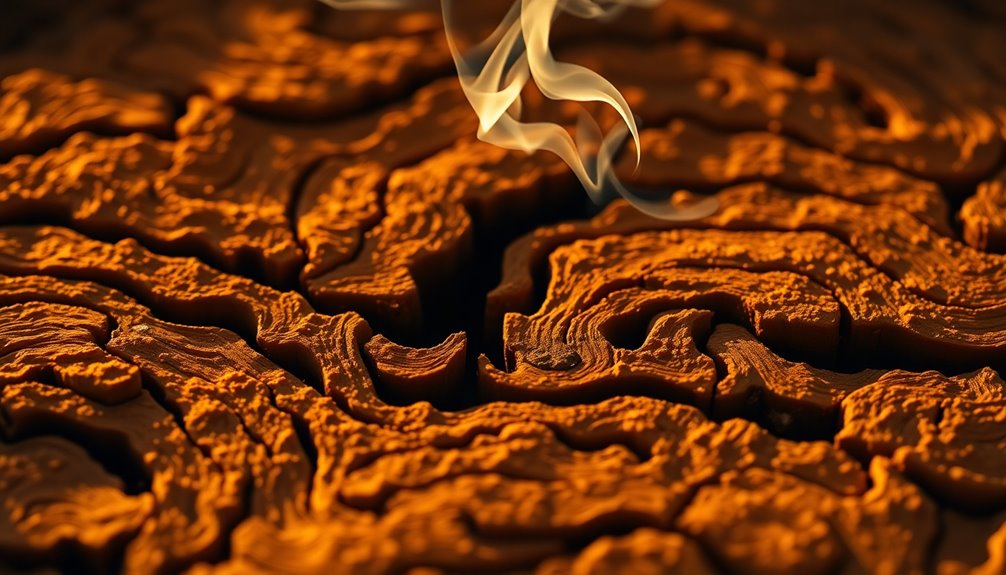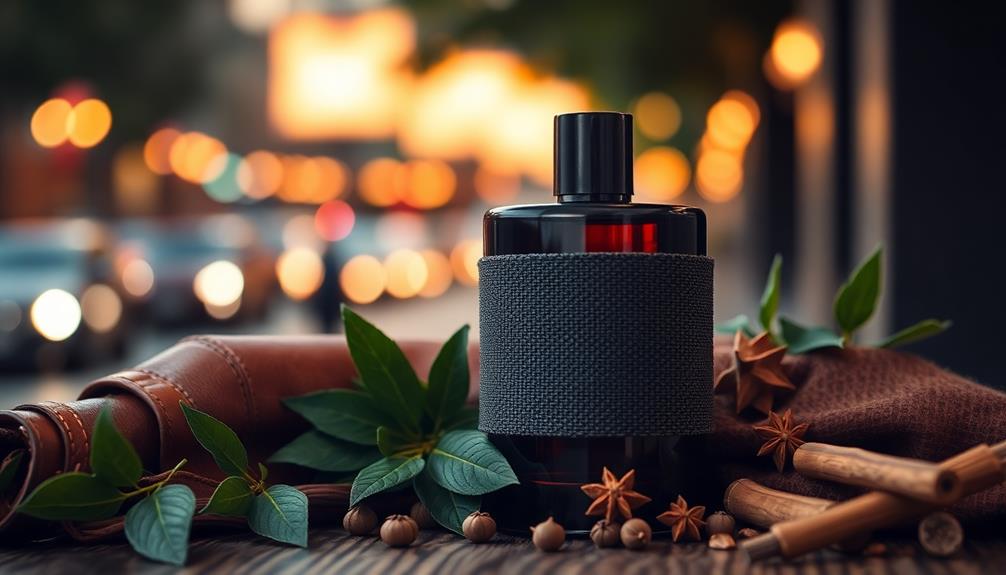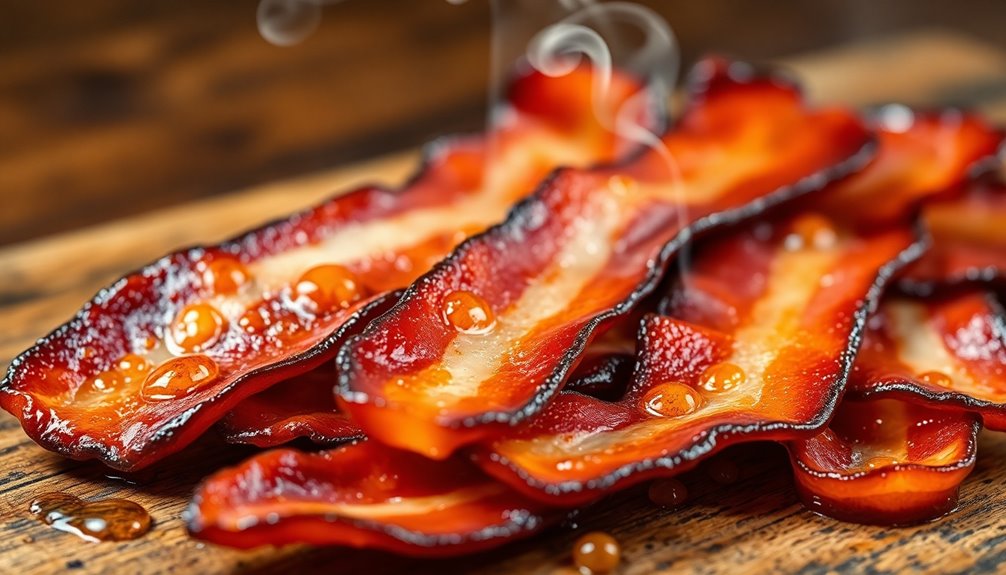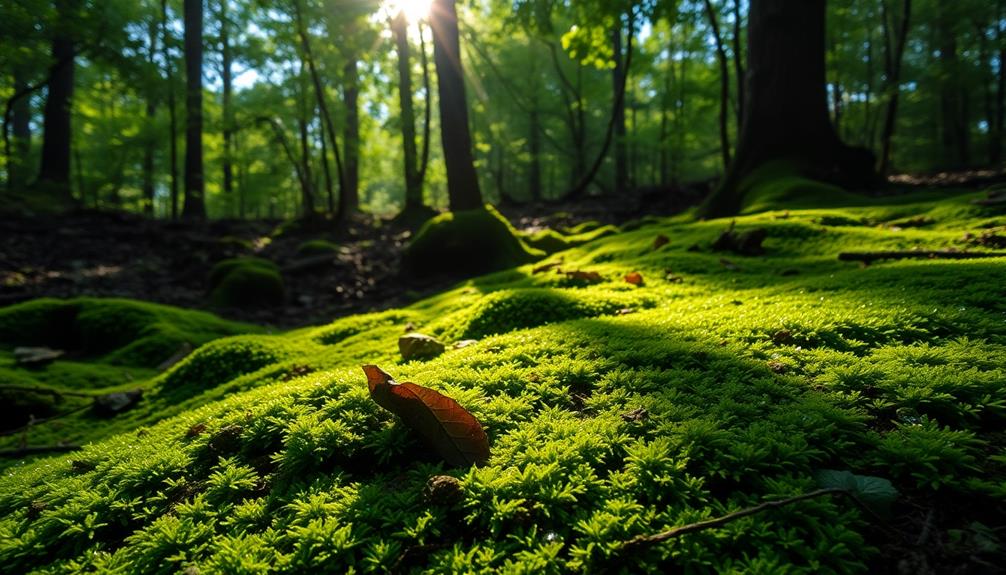Guaiac wood has a unique fragrance that combines smoky and woody notes with earthy undertones. You might notice subtle hints of sweetness and balsamic qualities, giving it a depth reminiscent of birch tar and burning rubber. Tobacco notes further enrich its aroma, making it complex and captivating. Often used as a base note in fragrances, guaiac wood enhances longevity and richness in perfumes. This scent creates intimate and cozy environments, making it popular in spas and meditation spaces. If you're curious about its uses and more intriguing aspects, you'll find additional insights waiting for you.
Key Takeaways
- Guaiac wood has a distinct smoky and woody scent with earthy undertones, making it rich and complex.
- It features subtle sweetness and balsamic qualities, adding depth to its fragrance profile.
- The aroma includes nuances reminiscent of birch tar and burning rubber, enhancing its uniqueness.
- Tobacco notes emerge, contributing to a warm and smooth base that lingers on the skin.
- Overall, guaiac wood is often described as balsamic or resinous, ideal for sophisticated fragrances.
Introduction

When you think about fragrance, the complexity of scent can evoke powerful emotions and memories. One ingredient that stands out in the world of perfumery is guaiac wood. Known for its distinct aroma, this wood offers a smoky and woody profile with subtle hints of sweetness. It's not just a singular scent; guaiac wood's richness encompasses nuances that remind you of birch tar and even rubber, contributing to its multifaceted nature.
As a base note in fragrance compositions, guaiac wood brings depth and longevity to perfumes, making it an essential element that enhances the overall experience. Its warm, balsamic, and slightly smoky aroma can anchor a fragrance, allowing other notes to shine while providing a comforting, earthy foundation. Whether used in natural or synthetic forms, guaiac wood has become a staple in modern perfume formulations.
Description of the Smell
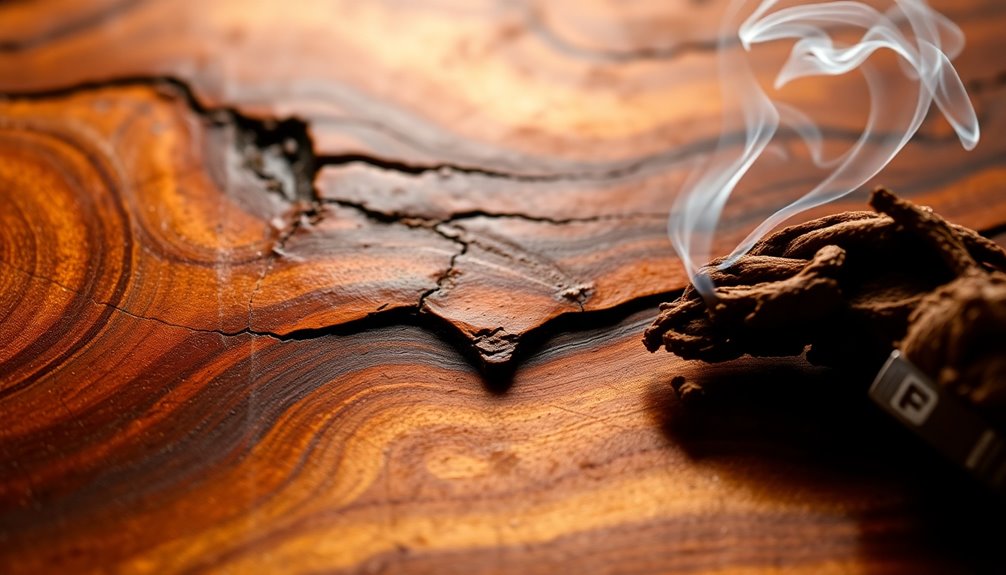
Guaiac wood's aroma is a fascinating blend of smoky, woody notes that create a warm and inviting scent profile. When you first encounter its fragrance, you'll notice the distinct balsamic and slightly sweet undertones that envelop you in comfort. The scent features birch tar-like nuances, bringing to mind the nostalgic smell of burning leaves and rubber, which adds a layer of complexity to its olfactory character.
As you delve deeper, subtle hints of tobacco emerge, contributing to the depth and richness of the fragrance. This combination makes guaiac wood not just a scent, but an experience—one that promotes tranquility and relaxation. Acting as a base note in perfumery, guaiac wood enhances the overall longevity of a fragrance, providing a luxurious foundation for other scents to build upon.
Often classified alongside other woody ingredients, guaiac wood stands out with its honeyed-sweet nuances. It invites you to explore a scent profile that is both familiar and unique, capturing the essence of nature in every whiff. Overall, guaiac wood offers a sophisticated aromatic journey that soothes the senses.
Source and Composition
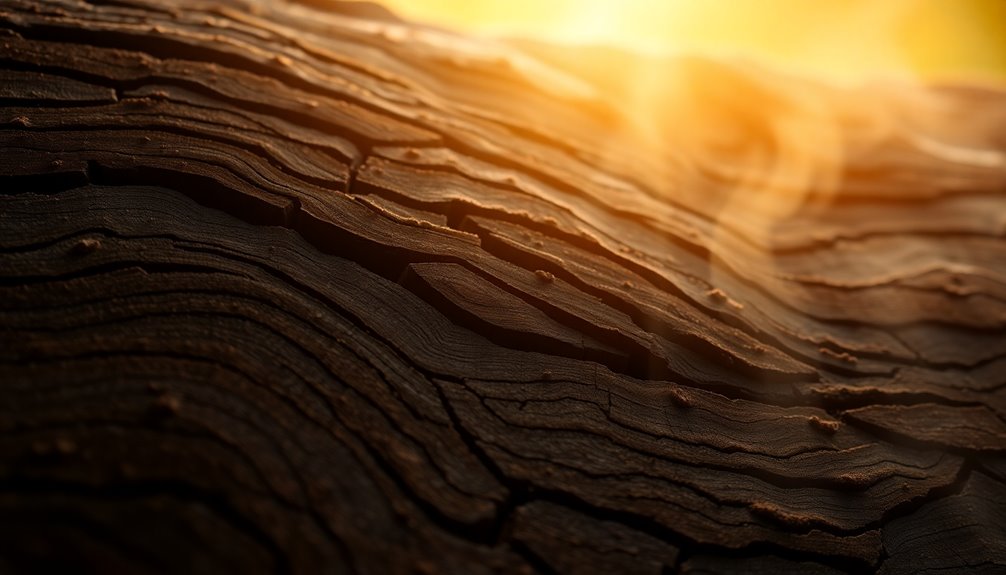
The Guaiacum tree, native to regions like the Caribbean and South America, is the source of the aromatic guaiac wood. This wood is prized in perfumery for its distinct scent profile, which features warm, balsamic, and slightly smoky notes. When you delve into its composition, you'll find that guaiac wood contains a complex blend of aromatic compounds. These compounds create a unique aroma characterized by woody, sweet, and resinous qualities.
The essential oil extracted from guaiac wood is obtained through a 24-hour steam distillation process of wood shavings. The result is a whitish-yellow, semi-crystallized paste rich in sesquiterpenes, which enhance its aromatic properties. This chemical composition not only contributes to guaiac wood's captivating scent but also provides antibacterial and anti-inflammatory characteristics.
In perfumery, guaiac wood is known for its stability and longevity as a base note. Its ability to maintain its scent over extended periods makes it an essential ingredient in many fragrance compositions. So, when you're exploring fragrances, remember the rich source and complex composition that give guaiac wood its enchanting aroma.
Typical Scenarios or Environments
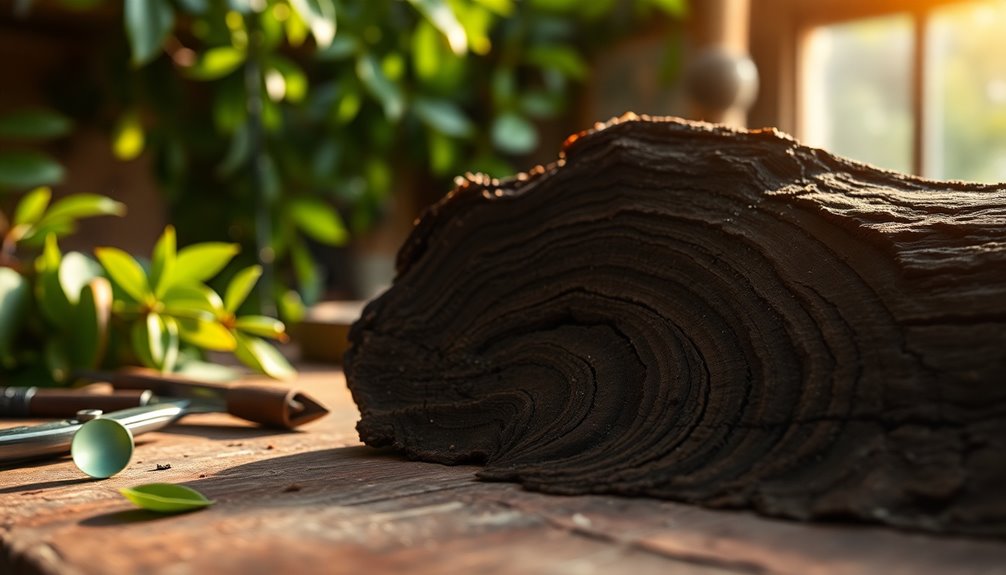
In cozy, intimate settings, the warm and smoky aroma of guaiac wood creates an inviting atmosphere that draws people in. You'll often find this heavy wood scent enhancing environments where relaxation is key, like spas or meditation rooms. Its unique profile, reminiscent of burning leaves and birch tar, contributes to a tranquil ambiance that promotes calm and stability.
This scent also shines in traditional medicine practices and cultural rituals, where its medicinal properties are appreciated. Imagine gathering with friends for an evening event where the rich, tobacco-like notes of guaiac wood linger in the air, making the experience feel special and memorable.
In perfumery, guaiac wood adds depth to masculine fragrances, perfect for those special occasions when you want to leave a lasting impression. Whether you're unwinding after a long day or engaging in stress-relief activities, the grounding scent of guaiac wood envelops you, making it ideal for personal spaces. Overall, the typical scenarios where this wood thrives highlight its ability to create environments that foster connection, relaxation, and a sense of well-being.
Emotional or Cultural Associations

Often referred to as the "tree of life," guaiac wood carries deep emotional and cultural significance, particularly among indigenous South American communities. This wood is used as an essential ingredient in traditional medicine and healing practices, emphasizing its role in spiritual well-being. Its smoky and woody aroma evokes tranquility and calmness, creating a peaceful atmosphere during various cultural rituals.
In perfumery, the rich and complex scent of guaiac wood symbolizes depth and mystery, enhancing the emotional experience for those who wear it. The aromatic qualities of guaiac wood don't just elevate fragrances; they also foster spiritual connections. When used in incense, it becomes a vital ingredient for enhancing meditation practices across diverse cultures.
Guaiac wood's medicinal properties further reinforce its cultural importance. Its historical and contemporary applications in healing continue to resonate, making it a cherished ingredient in various rituals. Whether you're experiencing its scent during a ceremonial gathering or simply enjoying it in a personal fragrance, guaiac wood embodies a profound connection to nature, spirituality, and emotional serenity. It invites you to explore the deeper meanings behind its captivating aroma.
Health or Safety Considerations

When using guaiac wood or its essential oil, it's essential to be aware of potential health and safety considerations. While guaiac wood boasts antibacterial and anti-inflammatory properties, which can be beneficial, you should use the essential oil with caution. Some individuals may experience skin irritation, so it's wise to conduct a patch test first.
Ingesting guaiac wood or its extracts isn't recommended, as it can lead to gastrointestinal distress. Therefore, focus on external uses like aromatherapy and perfumery to enjoy its scent safely.
Additionally, prolonged exposure to guaiac wood smoke can pose respiratory risks, similar to other types of wood smoke, so avoid poorly ventilated areas when burning it. If you have allergies to related plants, be extra cautious when using products that contain guaiac wood, as allergic reactions can occur.
Final Thoughts
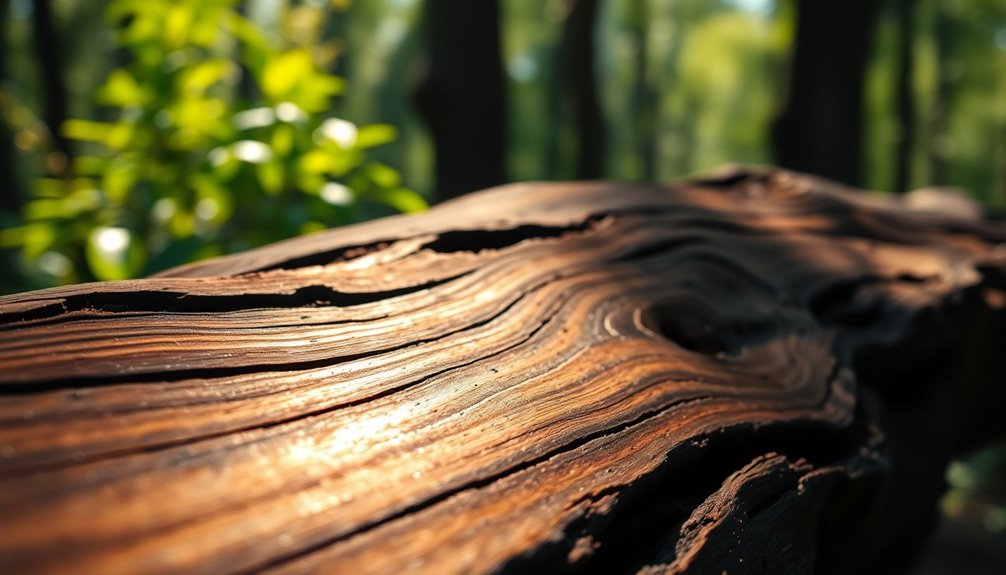
Wrapping up our exploration of guaiac wood, it's clear that its unique aroma and properties make it a valuable addition to the world of fragrance. With a distinctive profile that blends smoky, woody, and slightly sweet or balsamic notes, guaiac wood offers a complexity that enriches any scent composition. While it's less intense than agarwood, it still provides significant depth, serving as a base note that enhances the overall experience.
You'll find guaiac wood frequently featured in amber and woody fragrance blends, where it contributes to luxurious, sophisticated olfactory experiences. The warm, honeyed-sweet nuances of its oil not only elevate the fragrance but also promote feelings of tranquility. Whether in natural or synthetic perfumery, its versatility makes it a favorite among perfumers.
Ultimately, guaiac wood's lasting presence on the skin ensures that its captivating scent lingers long after application, making it a cherished ingredient in many signature fragrances. If you're looking to explore unique scents, guaiac wood might just be the perfect choice for adding a touch of sophistication to your fragrance collection.
Frequently Asked Questions
What Does Guaiac Smell Like?
When you encounter guaiac, you might notice its smoky, woody aroma with a touch of sweetness. It evokes the scent of burning leaves and tobacco, creating a warm and inviting experience. You may also catch hints of birch tar and rubber, adding complexity. This fragrance not only enhances perfumes but can also bring a sense of tranquility, making you feel relaxed and at ease in its presence.
What Does Guaiac Wood Smell Like Compared to Sandalwood?
When you compare guaiac wood to sandalwood, you'll notice distinct differences in their aromas. Guaiac wood has a smoky, woody scent with balsamic and rubbery undertones, giving it a sharper edge. In contrast, sandalwood offers a creamy, rich aroma that feels soft and floral. While guaiac wood adds a rugged depth to fragrances, sandalwood provides warmth and balance, making it versatile for both masculine and feminine scents.
Is Guaiac Wood the Same as Oud?
No, guaiac wood isn't the same as oud. While both are aromatic woods used in perfumery, they come from different trees and have distinct scent profiles. Guaiac wood offers a smoky, woody aroma with subtle sweetness, making it a softer base note. On the other hand, oud has a much stronger, opulent scent derived from the resin of the Aquilaria tree. So, you'll find a significant difference in their fragrances and characteristics.
Is Guaiac Wood the Same as Palo Santo?
No, guaiac wood isn't the same as Palo Santo. You'll find that guaiac wood comes from the Guaiacum tree, while Palo Santo comes from the Bursera graveolens tree. Their scents differ too; guaiac wood has a smoky, woody aroma, whereas Palo Santo offers a sweeter, citrusy fragrance. Both woods have unique uses in perfumery and traditional medicine, but they belong to different plant families and have distinct aromatic profiles.
